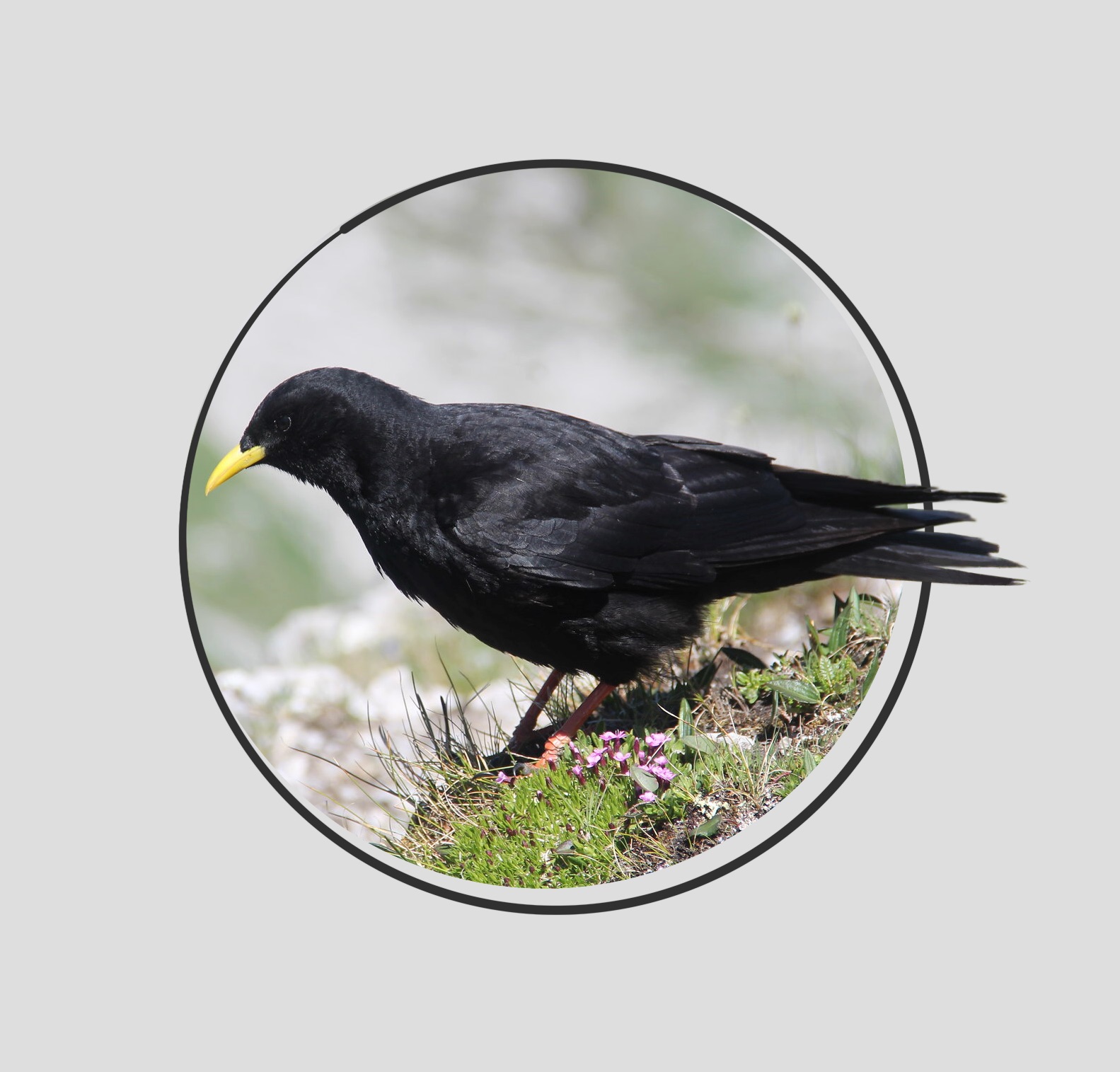ALPINE CHOUGH (Pyrrhocorax graculus) Chocard à bec jaune
Summary
A black “crow” with bright yellow beak and red feet this bird is unmistakable in the high alps. Often seen scavenging around restaurants, refuges and picnic spots.
This is the classic mountain bird, a breathtakingly skilful flyer, using updrafts and air currents to tumble and turn, soar high over cliffs and then dive deeply into ravines and gullies, constantly searching for food. But it is after all a crow, albeit a very elegant one with its red feet and bright yellow down-curved beak, and that makes it a scavenger, so this is the bird seen around all ski stations and mountain restaurants, always on the look-out for something to steal.
Globally it can be found in fragmented patches from Morocco, Spain, the Alps, Central Asia and the Himalayas where a different sub-species occurs. In Switzerland it is found throughout the Alpine region, and only in the alps, from about 1800m to 2800m, although the highest nest has been seen at 3,820m near Zermatt. It inhabits this tough niche above the tree-line even during the often desperate weather of winter at which time it may descend to the valleys in search of food, returning at night to their cliffs to roost. It mates for life, or for several years anyway, and is loyal to its nesting site, but it is seldom found alone and is usually in large noisy flocks (often of many hundreds) which tumble through the sky and seem to be constantly arguing and bickering amongst themselves. Studies of marked birds have shown that less than 20% of these groups may actually be breeding birds which is surprisingly low.
The two most common calls that you hear are a rolling trill and a descending whistle, here is a pair of birds doing both so that you can learn the two noises:
And both calls can be clearly seen in the sonogram:
But as I say they spend most of their time roving around in large flocks where a whole range of other whistles and trills are thrown into their squabbling, here is such a flock on a windy day in the Furkapass:
These calls have an almost electric quality to them and can carry long distances and penetrate the wind, here is a final sample:
Recent studies have indicated that wild species are reacting to climate change much faster than expected, some species move to higher latitudes and elevations to remain in the same environmental conditions. Time will tell how a bird like the Alpine Chough survives, it breeds higher than almost any other bird in the world and once you've reached the top of the highest mountains where do you go next ?




